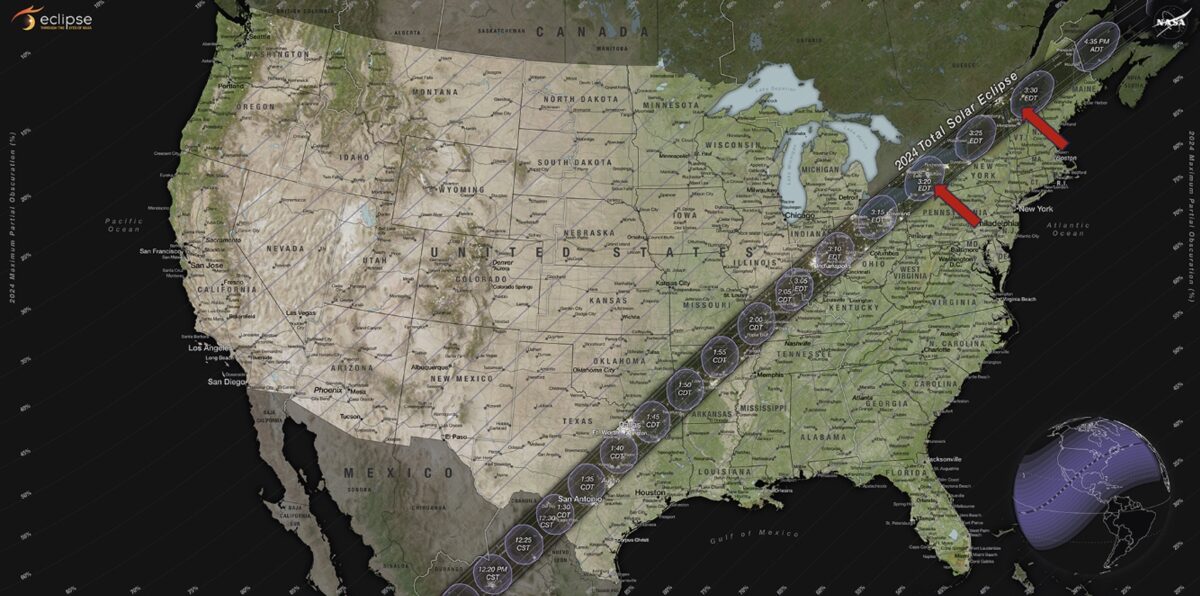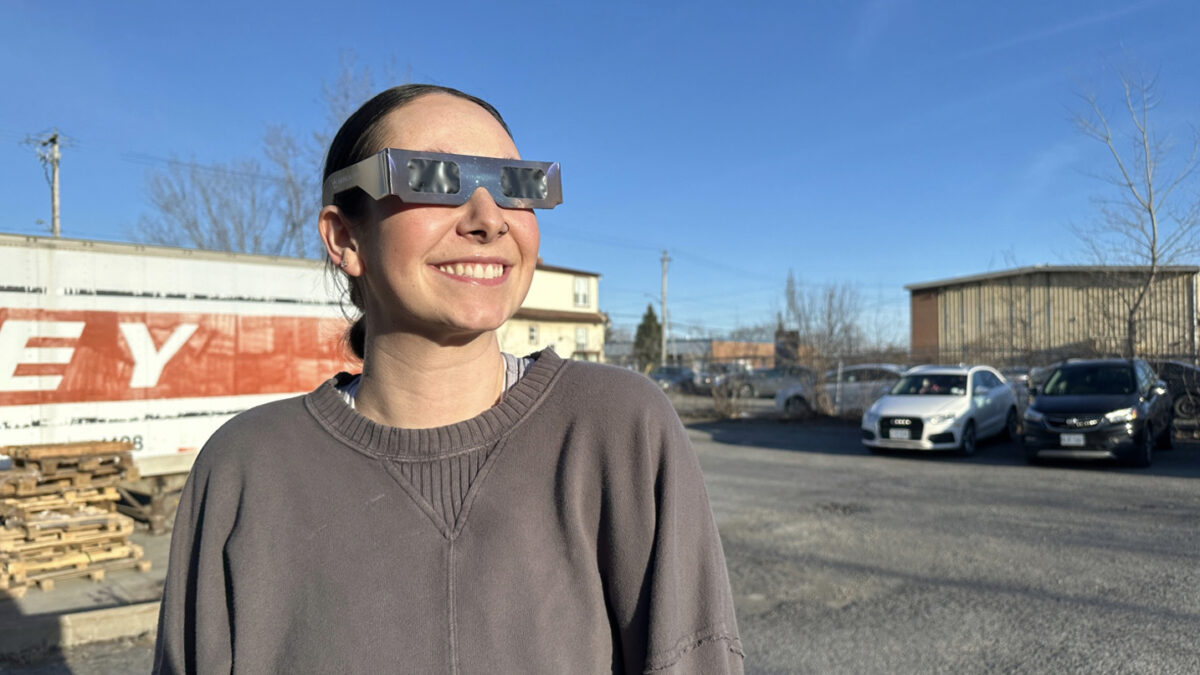Residents of Ontario and beyond are planning visits to various cities across the province to get the best possible glimpse of Monday’s total solar eclipse.
Some southern Ontario cities are expected to see more traffic than others because they lie in the path of “totality” — a 100-per-cent eclipse of the sun’s light by the moon as it crosses the path between Earth and the sun. Kingston is anticipating as many as 500,000 visitors and Niagara Falls — already a tourism hotspot — is braced for an influx of a million visitors to watch the eclipse.
Ottawa, which lies about 100 kilometres north of the path of totality, will experience a 99-per-cent blockage of the sun at about 3:25 p.m. Monday, Ottawa Public Health says. The local agency has a web page dedicated to the eclipse, which warns against anyone looking directly at the eclipse without protective eyewear.
“The best way to protect yourself from harm is to not look at the sun at any point during the solar eclipse,” said the OPH. “However, if you do wish to view the eclipse, there are ways to reduce your risks. You can wear approved eye protection (ISO Standard 12312-2:2015 solar filters that have the manufacturer’s name and address printed on the product). If you wear eyeglasses, place your eclipse glasses over them or place the eclipse viewer in front of them.”
The best way to protect yourself from harm is to not look at the sun at any point during the solar eclipse. However, if you do wish to view the eclipse, there are ways to reduce your risks.
Ottawa Public Health
Dr. Hanika Rizo, a geology professor at Carleton University, said this year’s eclipse will be “particularly interesting.”
“The sun has periods of activity where it becomes more active and more bright every 11 years. This year the sun is at a high activity peak,” she said.
Because of the sun’s brightness this year, scientists using telescopes and other instruments to study its features are experiencing highly obstructed views.
“Now that the moon is going to block most of the sunlight, a lot of planetary and solar scientists are excited because we will be able to better understand our star — our sun — because we will be able to see it through different instruments,” she explained.

Luckily for scientists and other curious Ontarians, the moon will cover the sun across a band of North America — including Cornwall, Brockville and Belleville — for about three full minutes Monday afternoon.
According to timeanddate.com, the eclipse in Ontario will begin just before 1 p.m. and by 3:12 p.m. the moon will have covered the sun in some locations.
Michaela Smith grew up in Cornwall. She said Monday’s event has been gaining a lot of traction in her town in recent weeks.
“I’ll be at work at the time of the eclipse, but I’m hoping to sneak out in order to catch a glimpse of it,” she said.
Smith said Cornwall will host an event at Lamoureux Park, where residents can expect to enjoy a clear view of the sky over the St. Lawrence River.
She noted that the town’s newspaper, the Cornwall Standard-Freeholder, has been reporting on the importance of eclipse glasses for weeks now.
“I already got my pair of glasses,” said Smith. “I know my brother and father said they’ll be using their welding shields to look up at it.”
Near the end of March, the Ottawa Public Library launched an initiative to assist local residents in promoting safe viewing of the eclipse. The library distributed eclipse glasses free of charge first come, first served at all OPL branches.
Some 11,000 free glasses were all handed out in days.
“We have completely exhausted our supply and currently do not have any additional glasses available for distribution,” said a library spokesperson.
In a public statement, OPL thanked community members for participating. The library also provided links to alternative methods of safe viewing of the eclipse.
The American space agency, NASA, has created an extensive website with educational tips on how to properly view the solar eclipse.
The site includes guides that teach readers how to put together homemade pinhole projectors and solar filters, and also referenced skin safety.
Martha Bonito, who lives in Hamilton said she and her husband have been advising others to take the “necessary precautions” while viewing the eclipse, which include “keeping pets indoors,” she said.
The couple said they expect road delays this weekend because of traffic on the Queen Elizabeth Way to Niagara Falls.
“It’s a concern,” Bonito said, “but it’s also something that happens once in a lifetime.”




